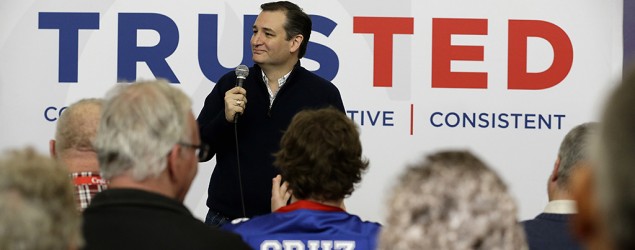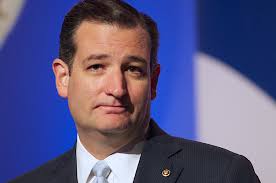BREAKING NEWS: Texas Sen. Ted Cruz is the projected winner of the Republican Iowa caucuses. Full results via the Associated Presshere.


How the Iowa caucuses work
On Monday, Feb. 1, at 7 p.m. CT, the Iowa caucuses officially kicked off the race for the presidential nominations. The state, which accounts for less than 1 percent of the United States population, gets an inordinate amount of attention from the candidates and the press because, strategically speaking, a strong showing in Iowa can translate into support in other states. It’s why the candidates choke down all manner of things buttered, battered and fried at the Iowa State Fair and why Donald Trump traded his Fifth Avenue penthouse for a Holiday Inn Express in Sioux Center for one night.
Most states hold a primary election where voters cast a secret ballot, although their choices depend on the type of primary: open, closed or semi-closed. Iowa, along with nine other states, uses caucuses, which are conducted by the Democratic and Republican parties rather than by the state.
Every state is allocated a certain number of delegates to the Democratic and Republican national conventions, where the nominees are chosen. These delegates are the prizes of the primaries. While some states abide by a winner-takes-all rule in which all the delegates are awarded to one candidate, some, including Iowa, allocate delegates to candidates proportionally in accordance with the amount of support expressed by primary voters or caucus-goers.
Iowa has used the caucus process in the primaries since it achieved statehood in 1846, but it originally held its caucuses sometime around the middle of the primary calendar. The Iowa Democratic Party moved its caucuses to January in 1972, with the Republican Party joining in the move for the next election cycle in 1976. The state has held its crucial status as a media magnet and electoral influencer ever since.
The mechanics of the caucus process differ depending on party, but both are held by precinct. Iowa has 99 counties comprising 1,681 precincts. Caucus-goers must be registered voters with the party they wish to caucus for, although both parties offer same-day voter registration.
The similarities between the Democratic and Republican processes end there.
At a Republican caucus, participants report to the designated location and hear one last pitch from a representative of each of the candidates. They then vote privately in a presidential nominee preference poll — it’s essentially a “normal” election. The results are counted and pooled statewide, and delegates are awarded accordingly.
The Democratic caucus process is more convoluted. Caucus-goers gather at the site and divide into groups based on candidate preference. Each group must meet a threshold of viability, which depends on the number of delegates at stake. For example, if a caucus is electing only one delegate, there is a simple majority vote; if a caucus is electing four delegates, a preference group must have 15 percent of the caucus attendees to be viable.
The number of delegates up for grabs at each Democratic caucus is determined by the voter turnout in the two previous caucuses. So, a precinct with high voter turnout in the past could see a huge fall in caucus participation and still decide more delegates than a precinct experiencing a spike in turnout but low participation numbers in the past.
If one or more candidate groups are nonviable, realignment occurs. Caucus-goers in the nonviable groups have the option of joining a viable one, persuading people from viable groups to jump ship or, if there’s more than one nonviable group, joining together. Caucus-goers who are particularly single-minded may opt to leave the caucus rather than support a different candidate. The realignment process involves a lot of coaxing and cajoling and sometimes has to happen over and over (and over) before all the existing preference groups are viable — at which point delegates are finally awarded.
Despite its importance in the race for the nomination, Iowa has consistently low voter turnout, with only 1 in 5 registered voters coming out to caucus. Because of the relatively involved process, participants skew toward the politically active, creating concerns that the results don’t necessarily reflect the “average Iowans” the candidates battle to win over.














